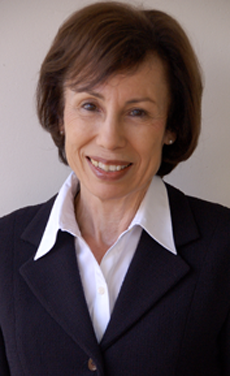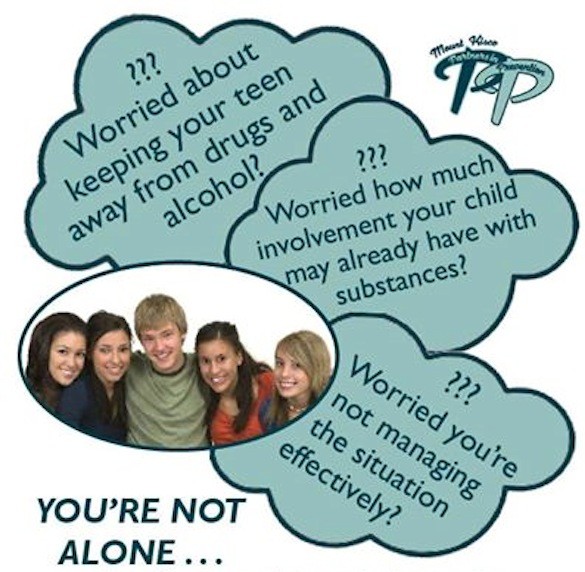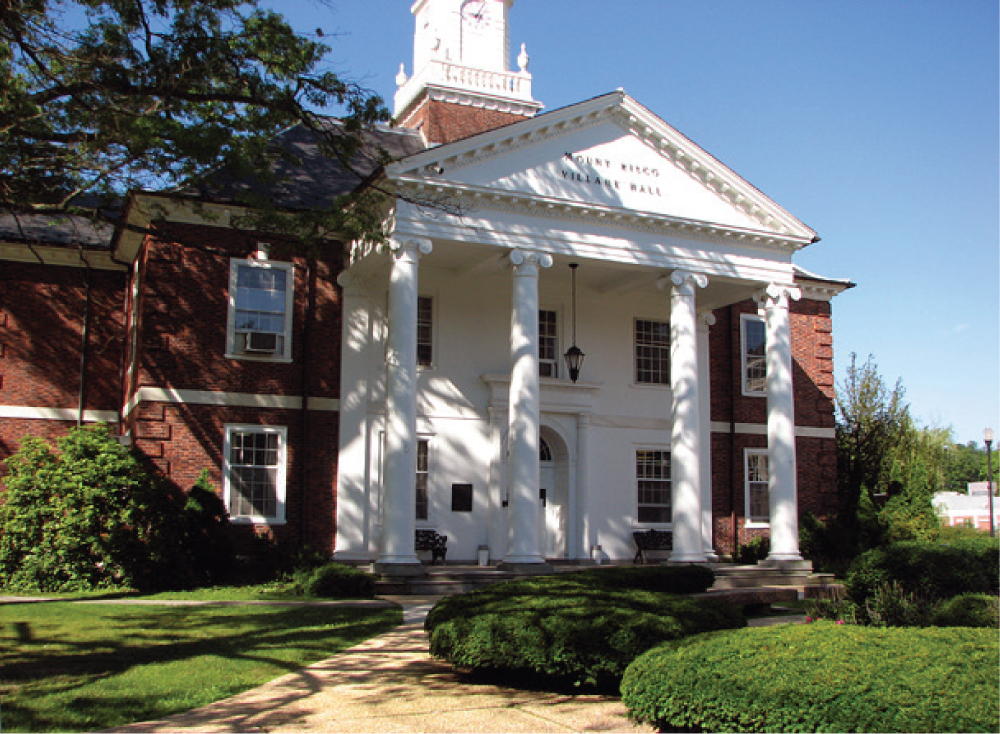Fall Survival Checklist: Mt. Kisco PIP on Teen Substance Abuse

Mount Kisco Partners in Prevention Board Members
Mt. Kisco Partners in Prevention (PIP) is a community alliance of local residents and institutions dedicated to reducing underage drinking, marijuana use, and prescription drug abuse among local youth. Funded by a $125,000 grant from the federal Drug Free Community program, PIP has marshaled the resources of schools, government, health care, law enforcement, clergy, the business community and students and parents to promote and implement their ongoing initiatives. We sat down with PIP coordinator Nan Miller, an Armonk resident who has a psychotherapy and social work practice in Mt. Kisco, for advice on what parents need to know about teen substance abuse.
What To Do: Why have you chosen alcohol abuse as your first initiative?
Dr. Nan Miller: Marijuana and heroin have been in the headlines a lot lately, but we know from years of data gathering at both the national and local levels that alcohol remains the most used substance among teens. The number of high schoolers who drink is more than double the number that use other substances, and the overarching concern is that alcohol has a negative impact on a teen’s brain, which is still developing into the mid-twenties.
What To Do: What is the data on teen drinking?

Dr. Nan Miller
Dr. Nan Miller: At the county level, over a third of our high school students have had at least one drink in the past thirty days, and about half of the seniors are drinking. That’s above the national average. Particularly troubling is the rate of binge drinking—that’s defined as more than five drinks in a row. If your teen is drinking, there’s a better than even chance they are binge drinking. There’s a big spike in alcohol use when kids enter high school, but many start drinking in middle school.
What To Do: What are the consequences?
Dr. Nan Miller: Alcohol use, especially binge drinking, can land a teen in unexpected territory. Unwanted or unprotected sex, fighting, and accidental injury are often precipitated by underage drinking. Girls are more susceptible to the impact of alcohol mostly because they tend to weigh less. Alcohol affects us depending on our height, weight, build, food intake, speed of consumption, and gender.
And yes, alcohol does affect adults differently from younger drinkers. The executive functions of a teen’s brain are still developing. That means they evaluate risk differently from an adult, and lack the tolerance an adult drinker may have developed to a certain level of alcohol.
The long-term consequences are also troubling. Kids who start drinking before fifteen are five times more likely to become dependent on alcohol as adults. The earlier they start, the worse their odds for addiction are. More immediately, kids need to understand that alcohol poisoning can kill. When your friend is vomiting, disoriented or passed out, it isn’t the time to become a medical professional. Call 911.
What To Do: What are the signs that our kids may be abusing alcohol?
Dr. Nan Miller: Unless your teen comes home smelling of alcohol and obviously drunk, reading the signs can be difficult. Some things that might be indicative are poor hygiene, secretive behavior, absenteeism from home or school, erratic behavior, emotional instability, lack of enthusiasm for things that used to engage them, a sudden shift in their circle of friends. Parents shouldn’t be afraid to ask outright—“Are you drinking?” But they should also decide in advance what their reaction would be.
What To Do: Are some kids more vulnerable to alcohol abuse than others?
 Dr. Nan Miller: The research is definitive that those with a family history of addiction are predisposed to the disease, and every teen has a right to know of such predisposition if such a thing exists for them. Beyond that, it’s hard to say why some students go through college without ever taking a drink, and others wind up dependent on alcohol. We do know that strong family connections and open communication with parents about substance use are effective protective factors in helping young people avoid alcohol in their developmental years. And for some kids, it’s situational: A time of extreme stress or a “party season” like the holidays or graduation may trigger experimentation or increased use.
Dr. Nan Miller: The research is definitive that those with a family history of addiction are predisposed to the disease, and every teen has a right to know of such predisposition if such a thing exists for them. Beyond that, it’s hard to say why some students go through college without ever taking a drink, and others wind up dependent on alcohol. We do know that strong family connections and open communication with parents about substance use are effective protective factors in helping young people avoid alcohol in their developmental years. And for some kids, it’s situational: A time of extreme stress or a “party season” like the holidays or graduation may trigger experimentation or increased use.
What To Do: What can a parent do?
Dr. Nan Miller: Talk, and talk some more, about alcohol and drugs. The federal mental health and substance abuse agency recommends beginning conversations about alcohol and drugs when your child is nine, and continuing regular, brief conversations throughout the school years. Listen to what your children have to say about drug and alcohol use. Stay connected with them and involved in their schedules. Always know where they are and whom they are with. Be awake to greet them when they come home from a social event and ask them how it was. Give them clear, consistent no-use messages and set consequences for noncompliance. Enforce those consequences. And practically speaking, limit their access to alcohol in your home. Lock it up or leave it on the store shelf.
What To Do: How do we explain our own alcohol use to our kids?
Dr. Nan Miller: One of the most important impacts on a young person is the behavior being modeled for them at home. If you drink and drive you are sending the message that it’s okay to do that. If you overindulge, then binge drinking is perceived as acceptable. Setting the right example for our children is important. And the fact remains that a young person in possession of alcohol with the intent to consume it is breaking the law in New York State, but an adult taking a drink is not illegal. In the same way we let young people get a drivers license at seventeen, but not fourteen, there needs to be adequate maturation of mind and body before a substance is introduced that can change the way we think, act, and feel. Some argue that twenty-one is too old, and others say it is not old enough, but the current laws say that twenty-one is an adequate age for alcohol consumption. We should all respect the law.

PIP meetings are held at the Mt. Kisco Library
What To Do: Is it okay to allow kids to drink at home where we can monitor their behavior?
Dr. Nan Miller: The fact is that in New York it is acceptable to permit your own child to drink in your own home—but only your own child, and no one else’s, and only in your own home. It isn’t okay to let them get drunk; that is considered child endangerment. But you have to ask yourself as a parent, what you are hoping to achieve by permitting them to drink with you. Research has established that the alterations regular alcohol use makes to the brain can be long lasting and detrimental, and young people are particularly vulnerable to its consequences. Other countries with more permissive drinking laws, or no minimum age at all; have much higher rates of binge drinking and alcohol dependence than the U. S. We need to acknowledge that “drinking responsibly” as a teenager is a mythical notion.
What To Do: Do kids actually listen to parent’s advice on drinking?
Dr. Nan Miller: Kids tell us over and over that their parents are the biggest influence on their choices regarding alcohol and drugs. Strong parental disapproval is an effective protective factor; the research confirms this. Rules are a means of keeping our kids healthy and safe, but they are also a way of expressing care and concern for our children. Even if they balk at the constraints, kids know that rules are an expression of their parents’ love for them and their desire to create security and well being in their world. What kid doesn’t want their parent to care about them?
Here are some recommended websites for parents concerned about teen substance abuse:
Mt. Kisco Partners in Prevention: http://mkpartners.org/dev/
Power to the Parent: http://powertotheparent.org/
The Partnership for Drug-Free America: http://www.drugfree.org/
SAMHSA. Talk. They Hear You: http://beta.samhsa.gov/underage-drinking
Partnership for Drug-Free Kids Parent Toolkit: www.drugfree.org/the-parent-toolkit
Samhsa -Tips on “the talk” about alcohol: http://beta.samhsa.gov/underage-drinking/parent-resources/small-conversations

















